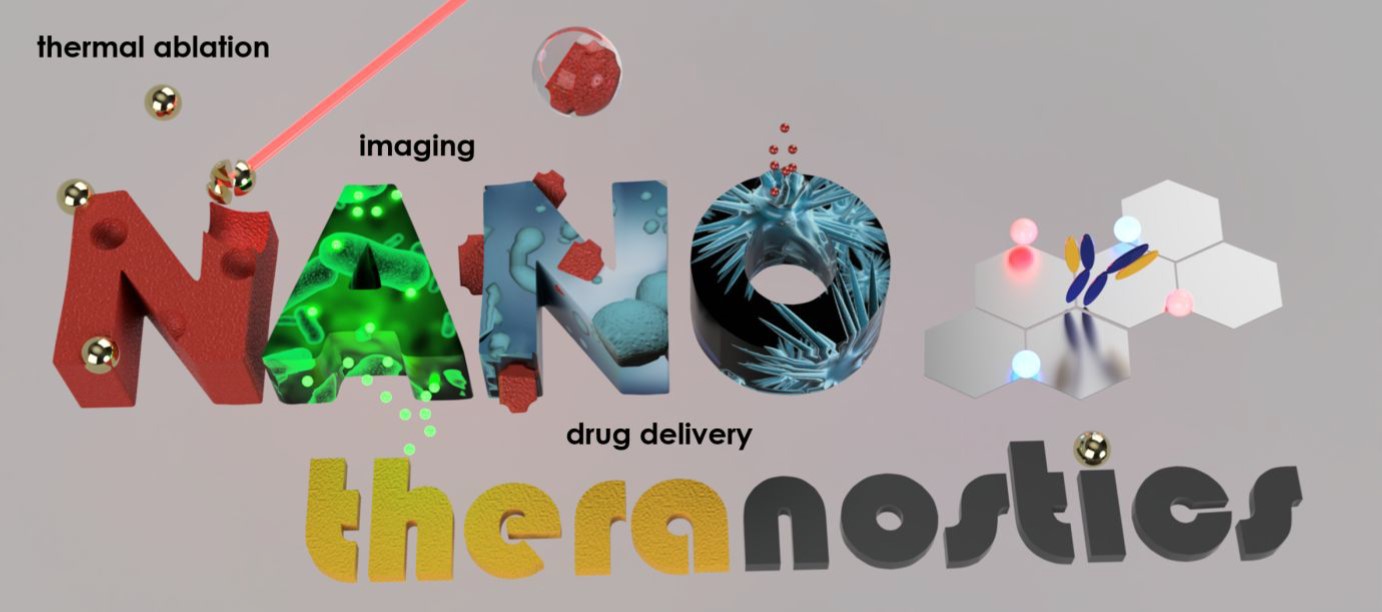The potential applications of nanomaterials to nanotheranostics, i.e. concurrent diagnostics and therapy, are discussed in a review signed by Xin Yi Wong, formerly a member of the ICN2 Nanobioelectronics and Biosensors Group, and by Group Leader ICREA Prof. Arben Merkoçi. The essay has just been published in ACS Nano.

Nanotechnology holds the potential to produce a big impact in medicine, since it allows the development of non-invasive, tunable and more effective diagnosis procedures and treatments. Nanotheranostics, in particular, is a branch of research oriented at applying nanotechnology and nanomaterials to combined therapeutics and diagnostics. Cancer, neurodegenerative, autoimmune and cardiovascular diseases can especially benefit from this new approach.
A thorough review recently published in ACS Nano and signed by Xin Yi Wong – formerly a member of the ICN2 Nanobioelectronics and Biosensors Group and currently postgraduate researcher at the University of Nottingham Malaysia – and by ICREA Prof. Arben Merkoçi – leader of the ICN2 Nanobioelectronics and Biosensors Group – examines the applications of various nanomaterials to nanotheranostics across several diseases, as well as how nanomaterials can be designed and tailored for different diagnostic and treatment purposes. Coauthors are Amadeo Sena-Torralba and Dr Ruslan Álvarez, of the same ICN2 group, and Prof. Kasturi Muthoosamy, of the University of Nottingham Malaysia.
The use of these nanomaterials permits a localized action, such as the release of chemotherapeutic drugs only when reaching the tumor site, with the consequence of reducing remarkably the side effects on healthy tissues. As explained in the review, different nanoparticles are optimal for each kind of tumor or disease. Thanks to their biocompatibility and stability, polymeric, lipid and metal nanoparticles are used as nano-vehicles to deliver diagnostics and therapeutics agents to the cancerous cells. While these materials are effective in solid tumors, more complex is the case of liquid tumors – such as blood cancers – where the target element circulates in the body and consequently can affect adjacent tissues. More extended studies, including in vivo tests, are required to tackle these issues.
Concerning neurodegenerative diseases, various nanotheranostics strategies for the diagnosis and treatment of Alzheimer disease have been studied and different nanomaterials selected depending on the therapeutic strategy. Positive results have been observed in in vivo therapy. Colloidal- or organic-based nanoparticles can be used for application to autoimmune diseases, since they allow prolonged circulation in the bloodstream and therefore controlled release of the therapeutic drugs at the inflammation sites. In the field of cardiovascular diseases, application of nanomaterials is explored with the aim of allowing non-invasive imaging modalities, such as MRI and Near-Infrared Radiation (NIR) fluorescence.
This field of research is rapidly growing and many studies are ongoing. To date, no nanotheranostics materials have been approved by the US Food and Drug Administration (FDA) yet, but most of the current nanomaterials are in various phases of clinical trials and are producing good results. Future research will focus on improving the clinical relevance of nanomaterials for theranostics applications and assessing their potential side effects and toxicities.
Reference article:
Xin Yi Wong, Amadeo Sena-Torralba, Ruslan Alvarez-Diduk, Kasturi Muthoosamy, and Arben Merkoçi; Nanomaterials for Nanotheranostics: Tuning Their Properties According to Disease Needs; ACS Nano. DOI: 10.1021/acsnano.9b08133

